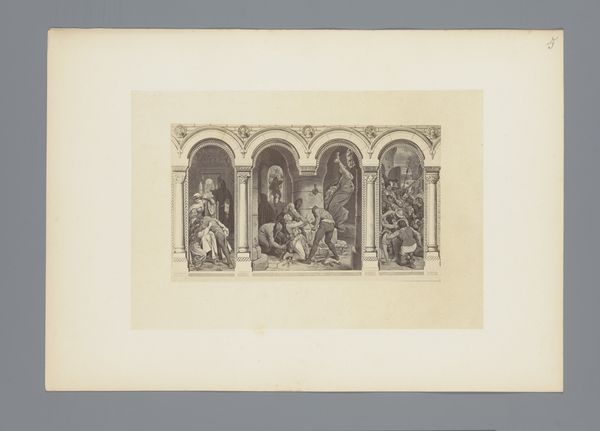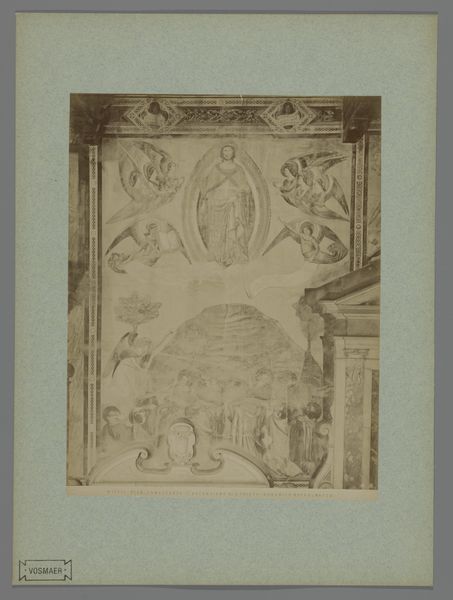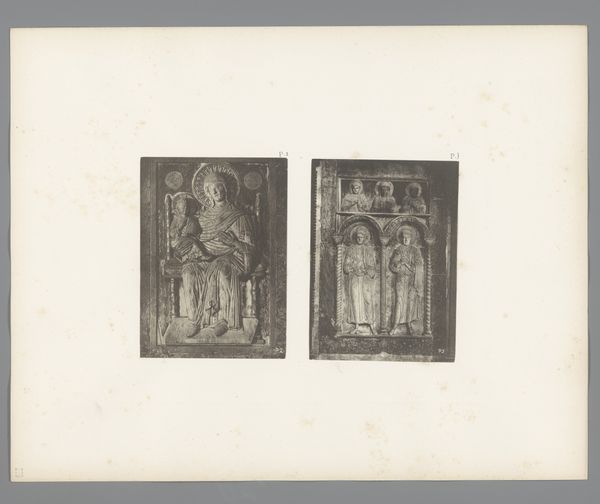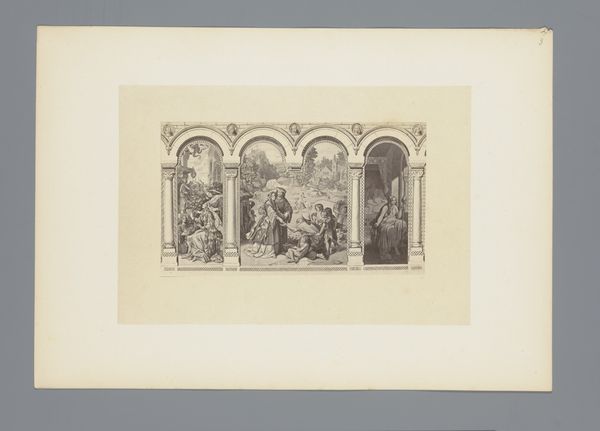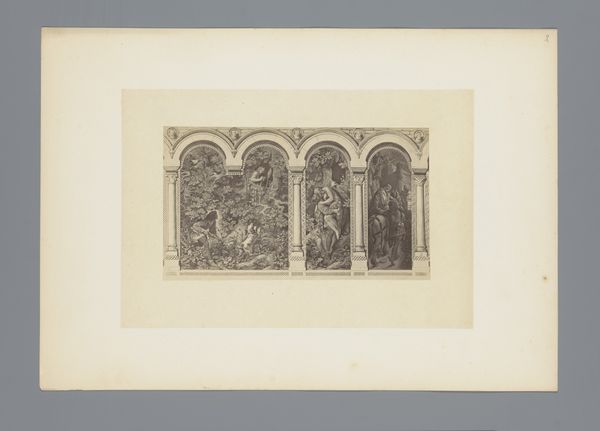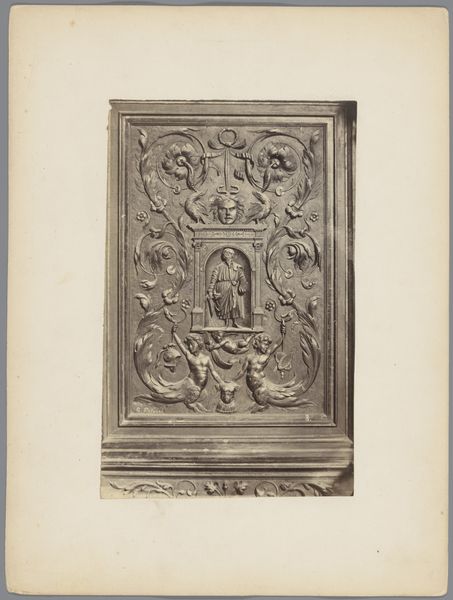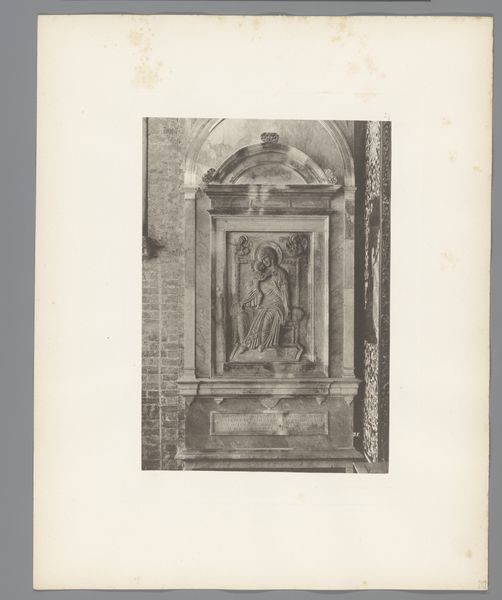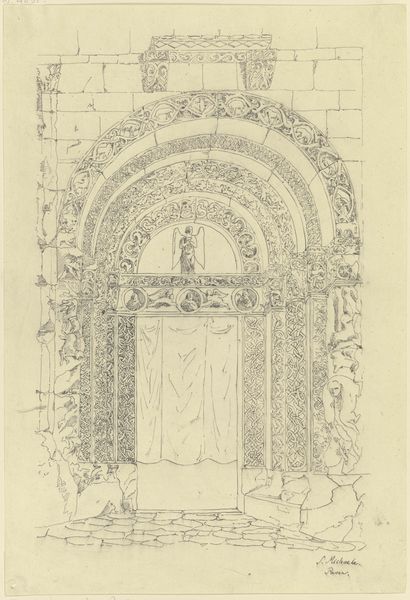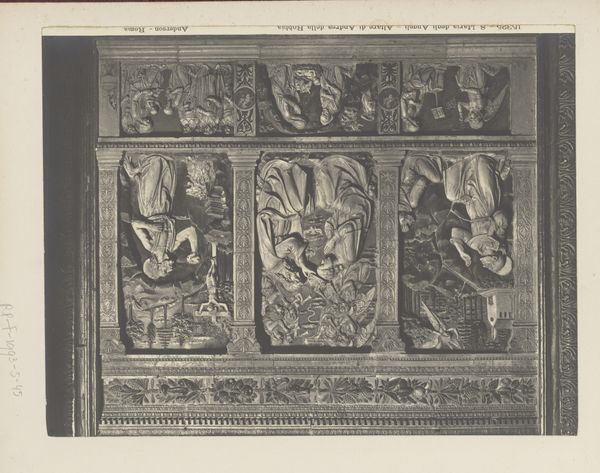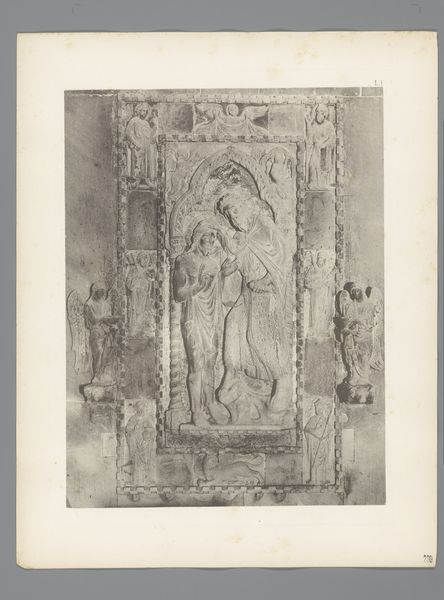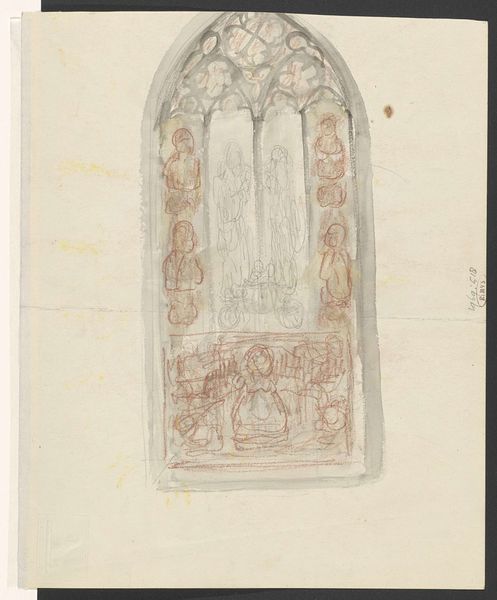
drawing, paper, ink, architecture
#
portrait
#
drawing
#
figuration
#
paper
#
form
#
11_renaissance
#
ink
#
pen-ink sketch
#
architecture
Dimensions: height 245 mm, width 330 mm
Copyright: Rijks Museum: Open Domain
Curator: This delicate pen-and-ink sketch is titled "Ontwerp voor een muurnis met een staande heilige," which translates to "Design for a wall niche with a standing saint." It’s attributed to Pieter (I) Verbruggen, dating from sometime between 1619 and 1686. Editor: There's a somber austerity to this sketch that intrigues me. The level of detail achieved with just pen and ink is striking. It evokes the silence and reverence of a chapel. Curator: Indeed. Knowing Verbruggen’s involvement in designing and sculpting religious works, it's fascinating to consider this not merely as a design sketch, but as a reflection of 17th-century religious and artistic practices. It highlights the cultural significance of religious art and its role in shaping beliefs and identities of the period. Editor: From a material perspective, the paper and ink would have been fairly commonplace, but their skillful application elevates them. Notice how the varying line weights create depth and shadow, almost as if the sketch were itself a relief sculpture. I wonder who produced the paper he worked on? And were there apprentices involved in the design process at this stage? Curator: These are crucial questions! This piece gives us insight into the means of creating and circulating religious imagery, but beyond religious iconography, what does this representation mean for broader narratives concerning gender roles and the idealization of sainthood within Catholicism at that time? Editor: And did these wall niches exist as functional objects or were they purely ornamental? Were they commissioned by wealthy patrons or religious institutions? Considering the level of craft involved, someone undoubtedly labored over turning Verbruggen's design into reality. Curator: Right! The interplay of form and function here invites reflection on patronage, workshop culture, and the social values embedded within the visual representation of faith during the period. Editor: Absolutely. The act of designing itself, sketching, would have been integral to production and circulation. Studying these things reminds me to think about art history differently, to not valorize unique authorship quite so readily. Curator: Thinking about these layered implications really adds depth to this deceptively simple sketch. It makes you consider power and piety and also their place in 17th-century Antwerp society. Editor: Exactly, it compels us to really consider both the design and the physical reality of it to have a much broader discussion.
Comments
No comments
Be the first to comment and join the conversation on the ultimate creative platform.

